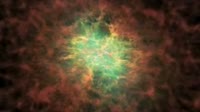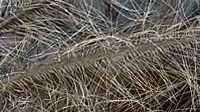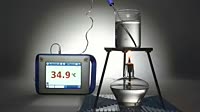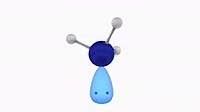Animation showing the conductivity of sodium chloride, or table salt, an ionic compound. Initially the solid salt is poured into a bowl, and electrodes connected to a light bulb are placed in it. No current flows through the solid. The salt is next placed in a water bath, and the current does flow through the salt solution, and the bulb lights up. This effect is caused by the mobility of the ions. Ionic compounds are made up of positive and negative ions (of sodium and chlorine respectively here), bonded together as their electric charges attract each other. In the solid, the force of this attraction means that the ions are not able to move, and no current flows. In solution, however, the water dissolves the salt (inset), liberating the ions, and allowing a flow of current between the electrodes. Chlorine gas is seen bubbling up from the anode (positive electrode) here. Electrolysis of salt solutions is preferable over electrolysis of molten salts when, as in this case, the solubility and the melting point are both high. See clip K004/3402 for a similar demonstration with lead bromide, which has a lower point and solubility.
Details
WebID:
C01808628
Clip Type:
RM
Super High Res Size:
1920X1080
Duration:
00:00:48.000
Format:
QuickTime
Bit Rate:
25 fps
Available:
download
Comp:
200X112 (0.00 M)
Model Release:
NO
Property Release
No













 Loading
Loading